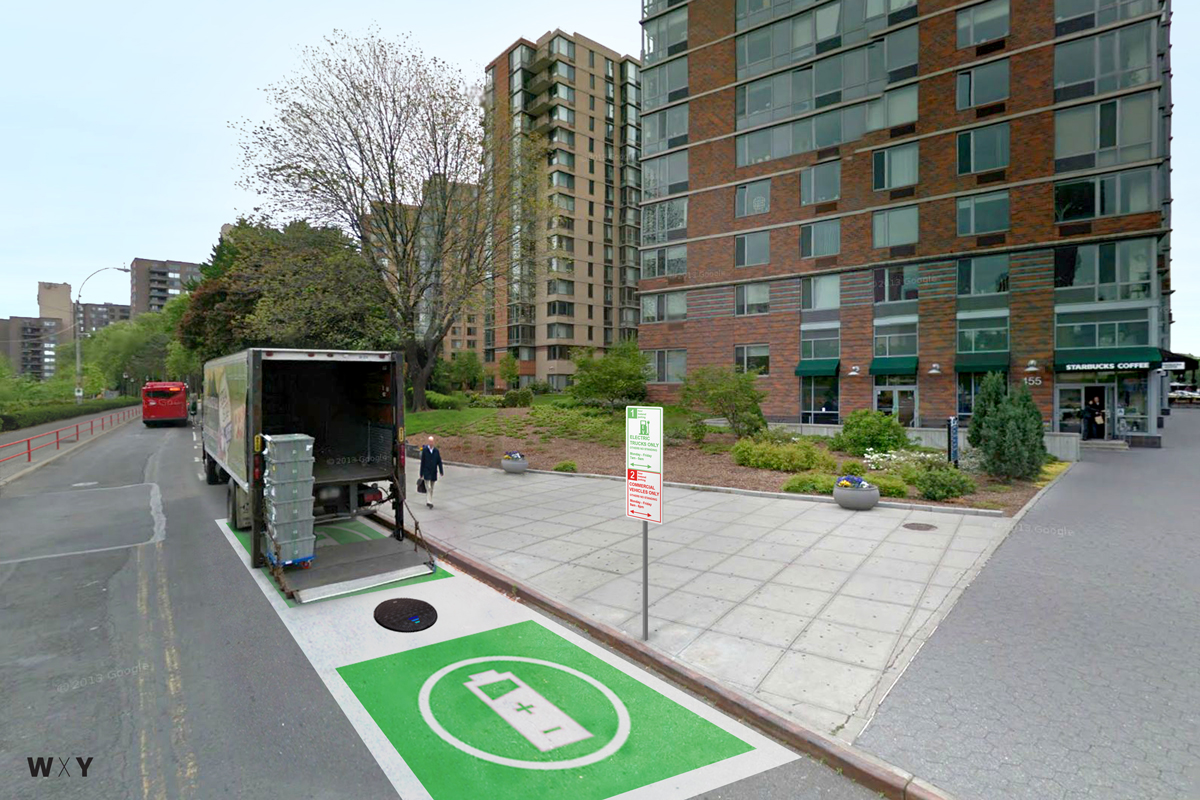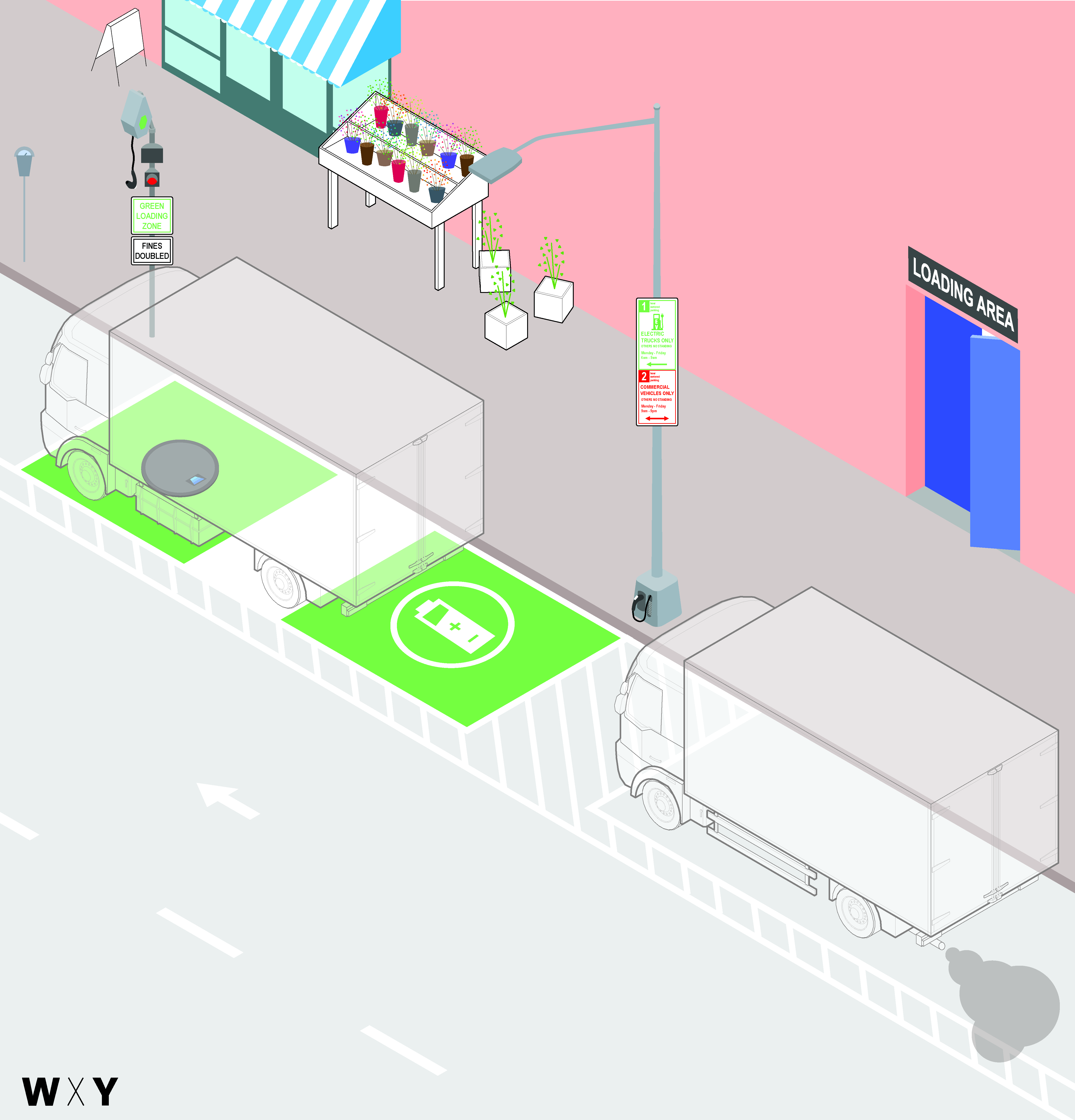
The community impact of freight traffic is acute; schoolchildren of the South Bronx incur asthma rates of up to 25%, with spikes in hospitalization correlating with peak trucking periods.
The growing volume of freight traffic in New York City has ramifications for residents’ health and the environment. It is time to adopt electric fleets.
Transitioning the city’s 100,000+ daily freight trips to electric vehicles has enormous potential to reduce these health impacts alongside greenhouse gas emissions. Yet despite generously funded subsidy programs and improving cost competitiveness, there are only a few dozen electric trucks in the city, having been embraced solely by the most sustainability-focused fleets. Market inertia is the most salient explanation for the anemic adoption rate, with added infrastructure complexity and restrictive route planning due to a lack of recharging opportunities as more specific challenges.
To induce the dramatic adoption of electric trucks, we propose installing ‘Green Loading Zones’ (GLZs), curbside loading zones exclusively available to zero-emission commercial vehicles. GLZs could be widely provided by the City at minimal cost, benefiting early-adopting fleets by guaranteeing spot availability and lower operating costs through minimized fuel needs, reducing parking fines, and eliminating the need to circle for loading spaces. These benefits are substantial, together translating to potential savings of tens of thousands of dollars, as confirmed by fleet managers.

The inclusion of charging infrastructure would enhance the utility of GLZs, extending range and enabling smaller battery reserves, both of which increase electric trucks’ cost-effectiveness. GLZs are best conceived as complementary to other curbside charging needs, for example, pairing afternoon food trucks with morning deliveries. Ambulances and food carts are prime candidates for electrification and shared use of charging facilities, due to their lengthy idling times and localized emissions. Off-hour delivery is another strong partner policy with GLZs, taking advantage of electric trucks’ quieter operation for nighttime deliveries in noise-sensitive residential areas.
We depend on freight, but we also deserve healthy neighborhoods. Encouraging transportation companies to transition to greener vehicle fleets will deliver both.
–